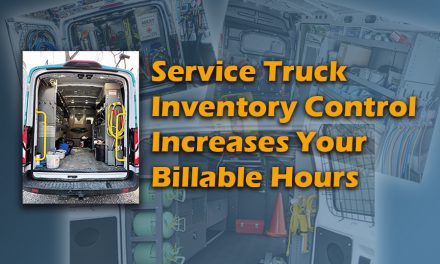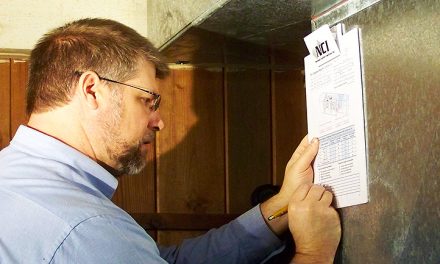
Tom Johnson
According to Forbes magazine, 44% of the 400 richest Americans made their wealth working in family businesses. Some of the largest and strongest corporations in the world — Ford, Samsung, Nordstrom, Toyota, Walmart and thousands of other very recognizable companies — started out as family businesses long before they went public. Some say family-owned and operated businesses are the backbone of the world’s economy.
Those of us who are a part of a family business also know they can be, the biggest cause of friction, fighting, and discord! This article is meant to have you think about these issues and deal with them BEFORE they become a problem.
Some History
I am a third-generation plumbing and HVAC contractor in Cambridge MN. My grandfather, Otto, was the first plumber in our town. He plumbed most of the homes and buildings in Cambridge when indoor plumbing first came to our community.
My father, Bob, was (like me) the youngest in his family. Grandpa actually died when my father was two-years-old, so there was a 30-year break in the business lineage.
Dad started his plumbing and HVAC company in 1964. It prospered through the growth years of the late 1960s and early 1970s. With five boys at home, he decided we needed to stay busy. So he bought us each a calf to care for. That led to a growing farm business as well!
In October 1974, my father was injured in a farming accident that cost him all the fingers on his right hand, as well as the tips of his first two fingers and thumb on his left hand. I was 10-years-old at the time.
That is how I came into the plumbing and HVAC business. My father had no technicians ‘on-call?. He ran the after-hours calls. After recovering from his accident, those after hours or weekend calls involved him taking me out with him, so I could be his ‘hands.’ He stood over my shoulders and told me what to do to fix whatever we were working on.
I was getting invaluable training, but at the time I just wanted to stay in bed or watch TV shows like Gilligan’s Island like the rest of the kids my age.
Entering the Family Business
When we weren’t fixing things, I was writing for him. I wrote out all job quotes, invoices, and ledger cards. I resented it most of the time.
Fast forward to the 1980s. I was in college, living in the big city, and loving my freedom. In the spring of my junior year, my mother called, crying. Dad hadn’t been able to cash a paycheck for months. She begged me to come home and run the business before they had to declare bankruptcy.
I came home to work in the business for a $160/week salary. We were COD everywhere, had no employees, and were more than $50,000 in debt.
Clawing away, I climbed the company up and out of that hole. I called my older brother, Mark, who was a plumber at a shop 40 miles away to come and join me. He did. We worked 60 to 70 hours per week. Slowly we built the business back up.
 Whose Company Is This?
Whose Company Is This?
That is when the first family issue reared its ugly head. Dad owned the business and the building it was housed in. He was now happy. The bills were paid, disaster avoided, and all was well. He had no desire to talk with us about buying him out. He avoided any such discussions like the plague.
As a result, the stress between my brother, father, and me was awful. Finally, Mark and I got enough courage to move everything out of his building and forced a sale offer, which Dad eventually accepted with the comment: ‘I guess this is what you think the value of my life’s work is!?
From my perspective, we were giving him a lot for a company that we saved and built value back into. But we didn’t talk about that and this lack of communication caused a huge rift that took years to get past.
My brother Mark and I made a simple 50-50 ownership agreement. We didn’t want to waste money on a lawyer. There wasn’t much to decide. He was a good plumber and I was good at service and sales. We made a good team. Mark ran the jobs in the field and I ran the office and sales.
Things Change
For more than 20 years that worked. Then, as Mark aged, he decided he didn’t want to ‘turn wrenches and shovel dirt’ anymore. He wanted to have a ‘cushy’ office job too. He had no training, no experience, and a typical construction worker’s vocabulary.
This marked the beginning of the end. For more than 20 years we made many assumptions and communicated poorly. Now we needed to talk to figure out these changes and had no idea how to go about it. Since we had a 50-50 ownership, we had no means to break a tie.
We both dug in our heels. We worked at the same company and did not talk to each other for 10 months. The business suffered severely. Most of our employees left. We were moments away from having to declare bankruptcy.
Fortunately, I can report we finally did come to an agreement. Mark retired four years ago. Today we are much better at being brothers than we were at being business partners!
Assumptions Do NOT Equal Communications
 I learned a lot of lessons from this experience. Most importantly is to never go into business with anyone whom you cannot communicate openly and honestly with. This might seem simple, but it is not! This is not about who you can be friends with. It’s about who you can trust. Who you can share your hopes and dreams with. It’s about who you can hear ‘no’ from without pouting.
I learned a lot of lessons from this experience. Most importantly is to never go into business with anyone whom you cannot communicate openly and honestly with. This might seem simple, but it is not! This is not about who you can be friends with. It’s about who you can trust. Who you can share your hopes and dreams with. It’s about who you can hear ‘no’ from without pouting.
You must be aware of your shortcomings and be OK with having someone point them out to you. Some key elements you need to discuss regularly include:
- Vision. All owners must be aligned on vision.
- Clearly defined Roles and Responsibilities.
- The plan for Accountability. This is something that most business owners fail to address. Who are you directly accountable to?
- Growth Strategy. This seems easy, but it can be very difficult, especially if visions are not in alignment. All owners must know and understand what the financials are for your individual business. If one or more of the owners does not understand this, alignment cannot happen.
- Goals. Again, this sounds basic, but it’s critical all owners understand each other’s goals for the business. Without such understanding, conflict nearly always begins.
- Control Structure. Each owner must be aware of and in agreement with the management structure. One micromanager can really disrupt this. Being aware of your own strengths and weaknesses really helps.
- Exit Plan. This can be huge. Going into business with someone without communicating how to retire is simply irresponsible.
If you plan to bring children or spouses into the business, first make sure they really want to. Don’t project your desires onto them. Open and honest communication is key.
Written Legal Agreements Are a Must
Next, you must write an agreement as to what happens if owners and managers disagree. Questions like, who carries the tie-breaker vote? Can I force a sale of stock? What if we come to an impasse? What if one of us dies? There are many more such questions that a good business attorney will help you sort through.
You must review this document regularly, at least every two years. More often is better. Why? Because things and situations change. As you age and mature, so should this document and the business.
Another tough lesson for me was the importance of having competent outside council. All too often we are just too close to a situation to address it rationally and reasonably.
I recommend having several trusted people in your life who you can bounce ideas off. Some of these may be paid positions, including a CPA or your lawyer (both of which you must have). Some owners set up a Board of Directors that meet regularly to advise them. Others use business coaches. Some simply have business peers with whom they share ideas, talk about issues, and help each other.
The point is: No one is an island! You need others to help guide and steer you into good decisions. If you try to do it alone, you will almost always fail!
 Communicate, Communicate, Communicate!
Communicate, Communicate, Communicate!
I learned I had to face reality head on, no matter how ugly. Having been literally moments from bankruptcy twice in my life, I can say with complete certainty things don’t get better until you first acknowledge the problems.
This is also where trusted advisors help. In my case, by conversing with a trusted advisor, I found a private investor (who happened to be a very satisfied customer) who gave me an operating loan with no collateral.
ithout that advisor, my life would have taken a completely different trajectory and my family business would have failed instead of thrived.
I cannot stress this enough — communication is the key. If you plan to be in business with anyone, especially a family member, communication is always the single most important element. If you are already in business, please review a few of these thoughts and have discussions with your business partners about them. I think you may find those discussions very enlightening.
Tom Johnson is a HVAC and plumbing contractor in Cambridge, MN. He is also a trainer for NCI in the Carbon Monoxide and Combustion safety course. As a contractor, Tom received many awards, including Contractor of the Year from both NCI and PHCC. He can be reached at: tom@tmjohnsonbros.com












Recent Comments